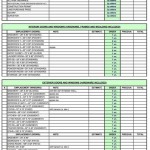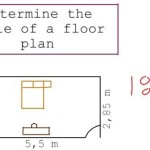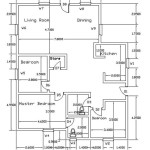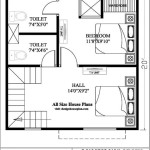How to Find Floor Plans for Your Home
Securing accurate floor plans for a house is crucial for a variety of reasons, ranging from simple remodeling projects to comprehensive renovations or even insurance purposes. The ability to visualize the layout of a home and understand its dimensions provides a foundational understanding for informed decision-making. The process of locating these plans, however, can sometimes prove to be challenging, requiring knowledge of various resources and strategies. This article provides a detailed guide on effectively finding floor plans for a residence.
Exploring Municipal and County Records
One of the most reliable places to begin the search for floor plans is at the local government level. City halls and county courthouses often maintain extensive public records that may include architectural blueprints submitted during the permitting process. These records are generally accessible to the public, although specific procedures for accessing them may vary depending on the jurisdiction.
The initial step involves identifying the relevant department within the local government responsible for building permits and property records. This is typically the planning department, building department, or county recorder's office. Contacting the department directly, either by phone or through their website, can provide valuable information about the process for requesting access to records.
When contacting the relevant department, it's essential to have the property address readily available. Additional information, such as the year the house was built, the name of the original owner (if known), and the property's parcel number can also be helpful in streamlining the search. The parcel number, in particular, is a unique identifier assigned to the property and is often used for tracking purposes within government databases.
Once the relevant records are located, access might involve a few different options. Some jurisdictions allow online access to archived documents, providing a convenient way to search and download floor plans from the comfort of one's home. Others may require a visit to the office to physically review the documents. In some cases, fees may be associated with obtaining copies of the floor plans, covering the cost of printing or digital reproduction.
It's important to note that not all homes will have floor plans on file with the local government. Older homes, for instance, may predate the requirement for submitting detailed architectural drawings during the permitting process. Similarly, if renovations were carried out without proper permits, updated floor plans might not exist in the official records. Even when floor plans are available, their accuracy should be carefully verified, as discrepancies can arise due to subsequent alterations.
Navigating the bureaucratic processes of local government can sometimes be complex. Patience and persistence are often required, and it may be beneficial to speak with a records specialist within the department who can provide guidance and assistance in locating the desired documents.
Contacting the Builder or Developer
If the house is relatively new or part of a larger development, reaching out to the original builder or developer represents another promising avenue for finding floor plans. Builders typically retain copies of the architectural drawings for the homes they construct, and they may be willing to share these plans with the current homeowner.
Identifying the builder or developer can involve researching the history of the property. Real estate records, property deeds, and online searches can often provide clues about the company responsible for constructing the house. If the house is located in a planned community, the homeowner's association (HOA) might have records of the original builder.
Once the builder or developer is identified, contact them directly to inquire about the availability of floor plans. It's essential to provide them with the property address and any other relevant details that can help them locate the correct plans. Be prepared to explain the reason for the request and assure them that the plans will be used for legitimate purposes.
The builder's willingness to share the floor plans may depend on several factors, including their internal policies, the age of the house, and the availability of the documents. Some builders may readily provide the plans free of charge, while others may charge a fee to cover the cost of retrieval and reproduction. In some cases, the builder may no longer have the plans on file, particularly if a significant amount of time has passed since the house was constructed.
If the original builder is no longer in business, it may be possible to track down the architect or design firm that created the plans. Architectural firms often maintain archives of their projects, and they may be willing to provide copies of the floor plans for a fee. Online architectural directories and professional associations can be helpful in locating the architect or design firm.
When contacting builders, developers, or architects, it's generally recommended to be polite, professional, and persistent. Clearly articulate the reasons for needing the floor plans and be prepared to provide any necessary documentation or authorization to support the request.
Utilizing Online Resources and Databases
The internet offers a plethora of resources for finding floor plans, ranging from general real estate websites to specialized databases and online plan providers. These resources can be particularly useful for obtaining generic floor plans or for finding plans for homes that are similar to the one in question.
Real estate websites such as Zillow, Trulia, and Realtor.com often include floor plans for properties that are currently listed for sale. While these plans may not always be available for every property, they can provide a valuable starting point for understanding the layout of the house. It's important to note that the accuracy of these plans can vary, and they should be verified against other sources whenever possible.
Specialized online floor plan databases, such as those offered by architectural design firms or online plan providers, offer a wide selection of pre-designed floor plans that can be customized to meet specific needs. These databases often allow users to search for plans based on criteria such as square footage, number of bedrooms and bathrooms, architectural style, and other features. While these generic plans may not exactly match the layout of the existing house, they can provide valuable inspiration and ideas for remodeling or renovation projects.
Online search engines can also be used to find floor plans by searching for specific keywords, such as "floor plans for [house style]" or "architectural blueprints for [location]." This approach can be particularly useful for finding plans for historic homes or for homes in specific architectural styles.
When using online resources, it's important to exercise caution and verify the credibility of the source. Look for websites that are reputable and that have a proven track record of providing accurate information. Be wary of websites that offer free floor plans without requiring registration or that ask for excessive personal information.
Another useful online resource is the Sanborn Fire Insurance Maps. These maps, created from the late 19th century through the mid-20th century, were originally designed for insurance purposes but often contain valuable information about the layout of buildings, including floor plans and construction details. Although they may not be available for all locations, Sanborn maps can provide a historical perspective on the evolution of a house and its surrounding neighborhood. Many libraries and historical societies have digitized versions of Sanborn maps that can be accessed online.
Additionally, consider exploring online forums and communities dedicated to home improvement and architecture. These forums can be a valuable source of information and advice, and members may be able to share floor plans or point to other resources that can be helpful. However, it's important to remember that information shared in online forums may not always be accurate, so it's essential to verify any claims before relying on them.
Hiring a Professional to Create Floor Plans
If all other approaches prove unsuccessful, the most reliable option is to hire a professional architect, draftsperson, or interior designer to create new floor plans of the house. While this option involves an upfront cost, it ensures that the plans are accurate, detailed, and tailored to specific needs.
An architect can provide a comprehensive set of architectural drawings, including floor plans, elevations, and sections. They can also offer advice on design options and ensure that the plans comply with local building codes and regulations. A draftsperson can create detailed floor plans based on measurements and sketches, while an interior designer can focus on the interior layout and design elements.
The cost of hiring a professional to create floor plans will vary depending on the size and complexity of the house, as well as the scope of services required. It's essential to obtain quotes from several different professionals and to carefully review their qualifications and experience before making a decision.
The process of creating new floor plans typically involves a site visit to measure the house and document its existing features. The professional will then create a set of preliminary drawings, which will be reviewed and revised in consultation with the homeowner. Once the final drawings are approved, they can be used for a variety of purposes, including remodeling, renovation, and insurance claims.
Before hiring a professional, it's important to clearly define the scope of the project and to communicate specific needs and expectations. Discuss the level of detail required in the floor plans, the intended use of the plans, and any budget constraints. It's also important to ask about the professional's insurance coverage and licensing status.
While hiring a professional is the most expensive option, it provides the greatest assurance of accuracy and completeness. It also offers the opportunity to obtain customized plans that meet the homeowner's specific requirements. This approach is particularly recommended for complex projects or for situations where accurate floor plans are essential.
Examining Existing Documentation and Clues
Sometimes, even without official blueprints, homeowners might find clues and existing documentation scattered throughout their property or within their records that can help piece together a reasonably accurate floor plan. This approach requires a keen eye and a bit of investigative work.
Start by thoroughly examining any existing paperwork related to the property. Old property deeds, mortgage documents, and insurance policies might contain descriptions of the house's layout or square footage. Even utility bills can sometimes provide clues about the number of rooms or the usage patterns that reflect the floor plan.
Look for evidence of past renovations or alterations. These might be revealed by discrepancies in the walls, ceilings, or flooring. For instance, a section of different flooring might indicate where a wall once stood, dividing two rooms. Variations in ceiling height or the presence of unused doorways can also point to past changes in the layout.
Pay attention to structural elements like load-bearing walls, which cannot be easily removed without compromising the integrity of the building. Identifying these key structural components can provide a framework for understanding the overall layout of the house.
Consider using measuring tools, such as laser distance measurers, to create a rough sketch of the floor plan. Measure the dimensions of each room and note the locations of windows, doors, and other features. Even a simple sketch can be a valuable starting point for visualizing the layout and for communicating with architects or contractors.
If possible, speak with previous owners or neighbors who may have knowledge of the house's history and layout. They might be able to provide insights into past renovations or alterations that are not readily apparent.
While this approach may not result in a perfect or official floor plan, it can provide a reasonable approximation of the layout and dimensions of the house. It can also be a valuable supplement to other methods of finding floor plans.

9 Ways To Find Floor Plans Of An Existing House Blueprints Archid

9 Ways To Find Floor Plans Of An Existing House Blueprints Archid

How To Find Floor Plans For A Smart House In 2024

Find House Plans For Your Old Blueprint Search Nethouseplansnethouseplans

How To Find The Original Floor Plans For Your House

9 Ways To Find Floor Plans Of An Existing House Blueprints Archid

Archimple Finding Building Plans And Floor For Your House Tips Resources

Building Your Dream Home How To Find The Right Floor Plan For You

5 Tips To Help You Find The Perfect House Plan Designers

How To Find Building Plans For My House Architecture Design Plan
Related Posts








